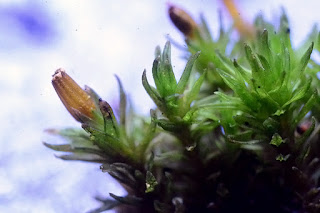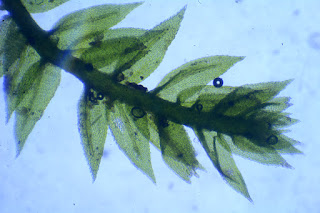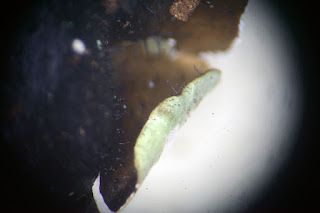Orthotrichum mosses are best identified when bearing capsules but as an exercise I decided to have a go at this one and see how far it could be narrowed down. Firstly Orthotrichums on trees can be characterised by their recurved leaf margins sometimes the entire length of the leaf. In the photo below you can see that the leaf tips are quite distinctive too beyond the recurved margin and the nerve is protruding which is also visible in the leaf section in the inset. With the specimen below the leaves were wide spreading with the basal quater curving and the remainder straight.
Elimination: O.anomalum, O.cupulatum, O.rupestre were all eliminated because they grow on rock and mine was on a branch. O.pulchellum has the leaves twisted when dry and O.tenellum has the leave flexuose when dry so these were eliminated too. O.diaphanum has a white hair point so not that one. Others were ruled out on leaf shape and Lyellii due to lack of gemmae. We are now left with a choice of three: O.stramineum, O.affine and O.striatum.
 |
| Orthotrichum affine found nearby the mystery Orthotrichum |
 |
Orthotricum sp.
|









